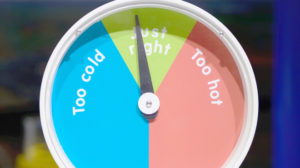Cryotherapy. It sounds like something out of science-fiction, but you can now find it in a strip mall near you. In fact, the method has been around longer than you think, despite just emerging as the latest health trend.
What is cryotherapy?
Cryotherapy is using cold temperatures for disease treatment, typically with some direct application device. While its history begins as early as the Egyptians in 2500 BCE, more modern usages utilized solidified air, solidified carbon dioxide, and, perhaps most familiar, liquid nitrogen. Freezing temperatures have been used to treat everything from headaches and warts to more serious skin cancers and lesions.
In addition, cryosurgical apparatuses like a cryoprobe have been used for specialized cryosurgeries.
Whole-body cryotherapy (WBC)
This new form of cryotherapy exposes your entire body to liquid nitrogen vapors for a limited time and doesn’t require a doctor’s visit. Each client is placed in a cannister-like tube and exposed to freezing temperatures (between -200 and -300 degrees Fahrenheit) for two to four minutes, just enough to cool your internal organs. The process can also be accomplished with ice packs, but the full-immersion method is far more common.
In the words of one cryotherapy shop owner, WBC serves as a “hallucinogen” for the mind, tricking it into survival mode. According to claims, the body reacts by raising its metabolism and increasing circulation, thereby reducing recovery times as a result of high physical activity, chronic pain, and more. Improved recovery times is one reason why the procedure is popular with professional athletes.
Problems with cryotherapy
However, there isn’t much science behind cryotherapy, in part because scientists have yet to conduct many studies that could validate its benefits, which include weight loss and pain relief.
Potential risks include frostbite, burns, hypoxia, and loss of consciousness.
Even the Federal Drug Administration (FDA) is skeptical and warns consumers to doubt healing claims. “We simply don’t know,” says FDA scientific reviewer Anna Ghambaryan, M.D., Ph.D. “At this time, there’s insufficient publicly available information to help us answer these questions.”
The FDA recommends consulting a doctor either before beginning treatment or during.
If you’re looking for potentially less-hazardous ways to enjoy a colder environment, read about the benefits of colder weather here.

